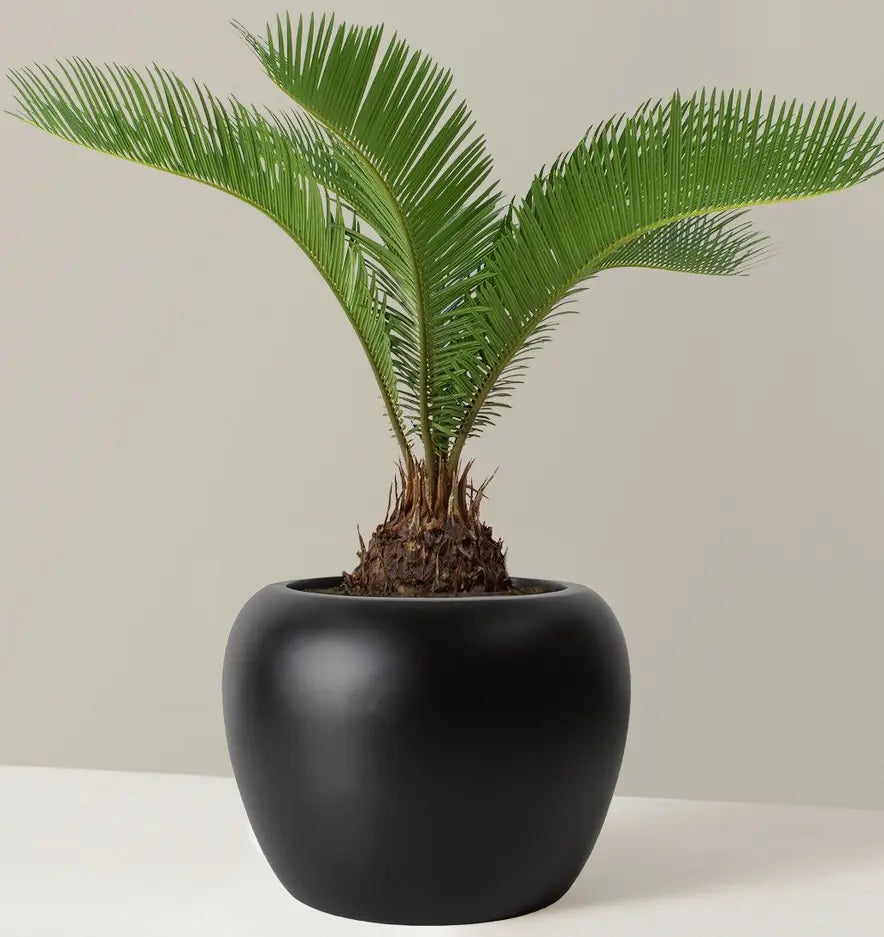
Plants 101
How to Care for a Sago Palm
Learn how to create the best growing conditions for a Sago Palm.

Sago palms (Cycas revoluta) are charming and ancient-looking plants that can bring a touch of the tropics to your indoor or outdoor spaces. They are native to various parts of Southeast Asia, including Japan, southern China, and Indonesia. They are commonly found in subtropical and tropical regions, and have been cultivated and admired for centuries due to their unique appearance and adaptability to different environments.
To ensure your Sago Palm flourishes for years to come, follow our care guide below:
Sunlight
Sago palms prefer bright, indirect light to some morning direct sun. Preferably placed in an East or West window, but a slighty diffused South window can also work. Too much afternoon direct sunlight can scorch the plant's leaves and too little light can cause leaf drop.
Not sure if your space will provide enough light? Consider measuring light to ensure your Sago Palm will receive enough. If you find your space doesn't provide enough light then consider installing a grow light to keep over the plant for 8-12 hours a day.
Water
Sago palms are drought-tolerant and prefer to dry out between waterings. Stick your finger into the soil or use a moisture meter to gauge moisture levels. Water thoroughly when the soil is completely dry, ensuring that excess water drains from the pot's bottom. Avoid letting the plant sit in standing water, as this can lead to root rot.
During the growing season (Spring and Summer), increase watering frequency, but be cautious not to overwater, as this can lead to root rot.
Humidity
The Sago Palm can tolerate normal room humidity levels, but consider boosting humidity in dry indoor environments. Not sure if humidity is high enough? You can measure the level of humidity with a hygrometer or LTH meter.
Temperature
Sago palms thrive in temperatures between 65°F to 80°F (18°C to 27°C). They can tolerate some cooler temperatures but should be protected from frost. Avoid drafts and sudden temperature changes, which can stress the plant.
Soil
Use a well-draining potting mix, such as a blend of Cacti soil or standard potting mix amended with extra perlite or sand. Ensure the pot has drainage holes to prevent waterlogged roots, and repot the plant every 2-3 years or once it becomes root-bound.
Fertilizing
Feed your Sago palm with a balanced fertilizer during the growing season (Spring and Summer). Instead of a water-soluble fertilizer, you can also use slow-release granules incorporated into the soil. Avoid over-fertilizing, as this can lead to nutrient buildup.
Pruning
Remove dead or yellowing fronds to keep your Sago palm looking neat and healthy. Use clean and sharp pruning shears to avoid damaging the plant. Wear gloves when handling the plant, as its fronds have sharp edges.
Toxicity
It's important to note that all parts of the Sago palm are toxic if ingested, especially to pets and children. Keep the plant out of their reach and be cautious when handling it.
Common Problems
Here are some common problems you may encounter when caring for a Sago Palm:
SYMPTOM: Wilting leaves, dry potting mix
CAUSE: Thirsty, underwatered
SYMPTOM: Yellowing leaves, black trunk
CAUSE: Overwatered
SYMPTOM: Leaf drop
CAUSE: Not enough light
With proper care and attention, your Sago palm can thrive and add a touch of the tropics to your living space. Regular maintenance and care will ensure your Sago palm remains a stunning and cherished addition to your plant collection.

Words By The Sill
Empowering all people to be plant people—a collection of articles from The Sill's team of plant experts across a variety of plant care topics to inspire confidence in the next generation of plant parents. Welcome to Plant Parenthood™.
Do Some Plant Shopping